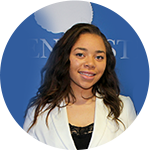Generation Indigenous
[W]e all need to work together to invest deeply – and for the long-term – in these young people, both those who are living in their tribal communities… and those living in urban areas across this country. These kids have so much promise – and we need to ensure that they have every tool, every opportunity they need to fulfill that promise.
–First Lady Michelle Obama, April 8, 2015
 The Generation Indigenous (Gen-I) initiative focuses on improving the lives of Native youth through new investments and increased engagement. This initiative takes a comprehensive, culturally appropriate approach to ensure all young Native people can reach their full potential. Gen-I will help improve the lives of Native youth by promoting a national dialogue and policies and programs to mobilize and cultivate the next generation of Native leaders. Key programs address: education, health and nutrition, juvenile justice, housing, and youth engagement.
The Generation Indigenous (Gen-I) initiative focuses on improving the lives of Native youth through new investments and increased engagement. This initiative takes a comprehensive, culturally appropriate approach to ensure all young Native people can reach their full potential. Gen-I will help improve the lives of Native youth by promoting a national dialogue and policies and programs to mobilize and cultivate the next generation of Native leaders. Key programs address: education, health and nutrition, juvenile justice, housing, and youth engagement.
Gen-I was launched on the heels of the President and First Lady’s visit to the Standing Rock Sioux Indian Nation in North Dakota where they had the privilege to meet local youth who shared their struggles and also their inspiring stories of hope and determination. Upon their return to the White House, the President told his staff to “find new avenues of opportunity for our Native youth . . . [because] if we do, there’s no question of the great things they can achieve – not just for their own families but for their nation and for the United States.”
You can read the President’s announcement of Generation Indigenous here.
Gen-I includes two main components:
Youth Engagement
- The Native Youth Network is an interactive online portal that empowers youth to become leaders in their communities by connecting peers to resources and tools.
- The Native Youth Challenge and Tribal Leader Challenge invite Native youth, organizations, and tribal leaders to get involved with Gen-I by joining the Native Youth Network.
- The Cabinet Secretary Youth Listening Tour fulfills President Obama’s call for his Cabinet to head out into Indian Country and engage with youth and tribal leaders. Secretary of the Interior Sally Jewell kicked off the listening tour in February.
- The first-ever White House Tribal Youth Gathering brought Native youth leaders to Washington, DC for a day-long convening on July 9, 2015. The President announced the Tribal Youth Gathering at the 2015 Gathering of Nations Powwow.
Strategic Investments and Policies
- The President’s FY 2016 Budget proposes significant investments across Indian Country with a focus on Native youth. Read more about President Obama’s FY 2016 Budget Proposal.
- The Department of Education’s Native Youth Community Projects uses an existing grant program to fund a select number of communities to improve college-and-career-readiness of Native children and youth. Read the Department of Education’s announcement about NYCP here.
- The Department of the Interior is leading an effort to Reform the Bureau of Indian Education Reform (BIE) to provide students attending BIE-funded schools with a world-class education and transform the agency to serve as a capacity-builder and service-provider for Tribes in educating their youth. Read the Bureau of Indian Education “Blueprint for Reform” here.
To see how all these pieces fit together, click here.
Featured Youth Leaders
Meet some of the young leaders actively engaged in Generation Indigenous who recently attended the White House Convening on Creating Opportunity for Native Youth:

Jude Schimmel
"The reason I’m here is because I’ve been given opportunities, and I want to be able to give back to Native Americans across the country." —Jude Schimmel from the Confederated Tribes of the Umatilla Indian Reservation. Jude grew up on the reservation for the first 15 years of her life before moving off in her sophomore year of high school. Jude went on to earn a basketball scholarship from the University of Louisville, where she graduated last spring and is now earning a Master's degree. Jude has travelled to more than 40 different Native communities across the country to give inspiration and hope to her fellow Native youth.

Dahkota Brown
"My tribe is actually a landless tribe like many California tribes. We don’t have land or reservations. We have what is called Rancheria. We are multiple tribes that are put on the same really small piece of land." —Dahkota Brown from the Wilton Miwok Rancheria. To help his fellow Native youth in California and around the country, Dahkota created a program called NERDS, Native Education Raising Dedicated Students. NERDS is a peer-to-peer tutoring program to help Native youth succeed and reach higher for a college degree.

Jazmyn Espinoza
"I am a 12-time suicide attempt survivor and also a sexual assault survivor." —Jazmyn Espinoza from the Stockbridge-Munsee Band of Mohican Indians. Through her experiences, Jazmyn created a program called the Warrior Circle Program to help other Native youth who have faced similar obstacles learn how to find a positive identity through their culture, through themselves, through their interests, and through their beliefs.
Get Involved
- Are you a Native youth, age 14-24? Join the Native Youth Network by accepting the Native Youth Challenge.
- Are you a Tribal leader? Accept the Tribal Leader Challenge.
- See resources and opportunities for Native Youth within the Federal Government.
- Learn more about the first-ever White House Tribal Youth Gathering
